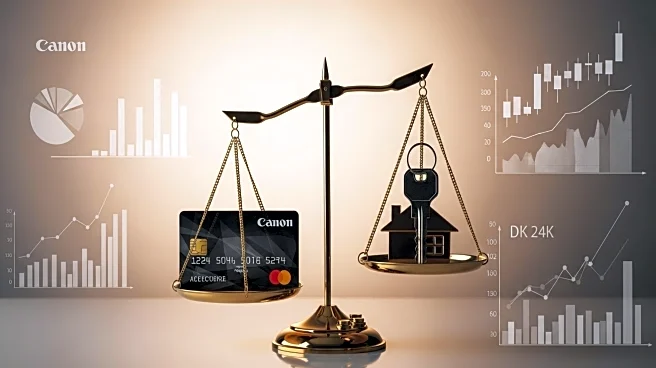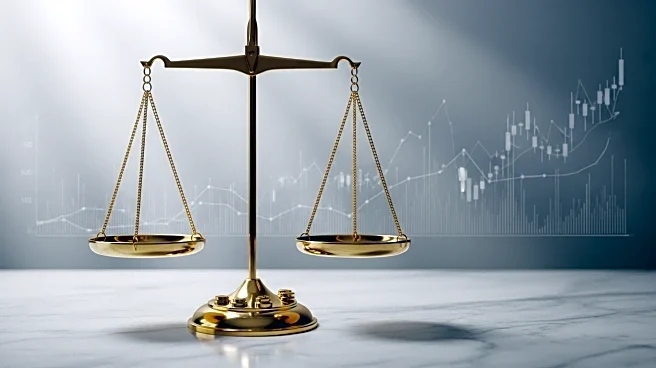What's Happening?
The Federal Reserve has reduced the benchmark interest rate by 25 basis points, setting it within a range of 4.00% to 4.25%. This marks the first rate cut of 2025, following three reductions in late 2024. The decision comes amid reports of modest inflation pressures and a weaker job market. The Federal Reserve's rate adjustments influence the interest rates on various financial products, including credit cards, auto loans, and mortgages. The committee is expected to meet again in October and December, with economists predicting at least one more rate cut before the end of the year.
Why It's Important?
The Federal Reserve's decision to lower interest rates has significant implications for both borrowers and savers. For consumers, the reduction in rates can lead to lower borrowing costs on credit cards, personal loans, and mortgages, potentially easing financial burdens. However, savers may see reduced yields on savings accounts and certificates of deposit, as banks adjust to the lower federal funds rate. The move is intended to stimulate economic activity by making borrowing more affordable, but it also reflects concerns about economic growth and inflation.
What's Next?
The Federal Reserve's upcoming meetings in October and December will be closely watched for further rate adjustments. Economists anticipate at least one more rate cut before the end of the year, which could further influence borrowing costs and savings yields. Financial advisors suggest that consumers consider refinancing high-interest debt and exploring balance transfer options to take advantage of the current rate environment. Additionally, potential homebuyers might find more favorable mortgage rates if further cuts occur.










